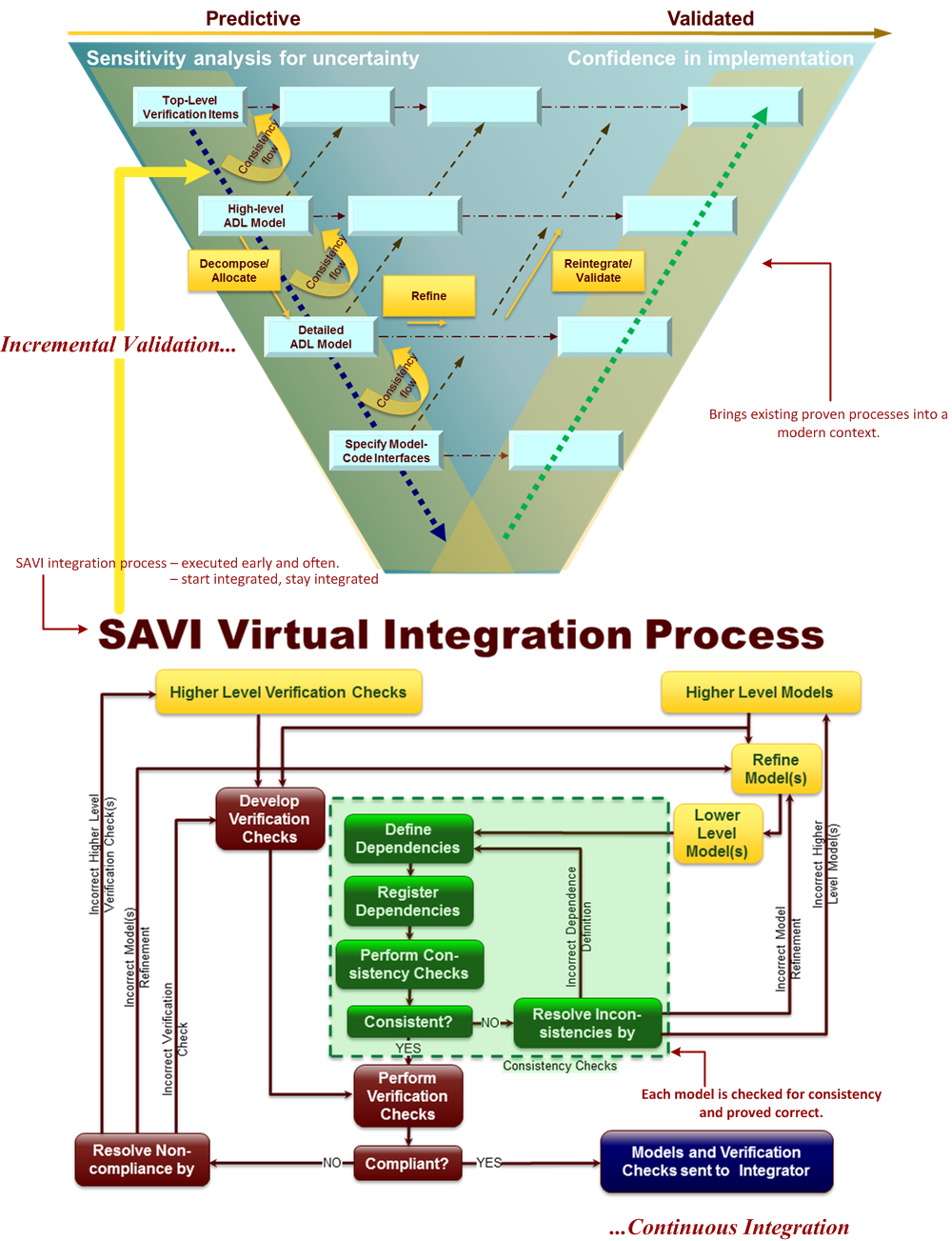The SAVI program is committed to developing a virtual integration methodology that manages the exponentially increasing complexity of modern aerospace systems.
As a result of reduced systems and software rework costs, SAVI pays for itself in the first commercial aircraft developed with the VIP.
Develop complex aerospace systems at lower cost and on schedule through virtual integration.
The objective is to lower development cost of complex aerospace systems and to deliver the final product on schedule by using model-driven virtual integration that begins during early requirements definition and continuously monitors system evolution for inter-model consistency.
The SAVI approach detects and corrects errors and defects earlier in the development cycle than a traditional integration approach.
Early and continuous integrated analysis
The SAVI system defines and registers all inter-model dependencies, continuously performs consistency checks and proves all models are consistent. As changes are made, the SAVI annotated architectural model checks each change for consistency and proves it correct. This systems engineering in a cross-domain context results in consistency and absence of contradictions.
The SAVI approach ensures internal consistency for suppliers along with global consistency checks for integrators.
A hierarchical model framework encourages questioning of all assumptions and leads to reuse of key elements.
SAVI facilitates broader use of formal assessment tools in parallel with informed design judgments where formal analysis is not possible.
Models rather than documents
Analyzable models, rather than paper-trail documents, initiate and sustain the architecture-centric paradigm.
The analyzable character of model-defined systems encourages trade studies with quantifiable evidence supporting improvements in system elements before they are realized in hardware and software.
An analytical history of design evolution provides traceability difficult to match in a document-driven approach.
The “Integrate, analyze … then build” mantra for SAVI springs from this approach and allows the VIP to attack system synthesis issues.



